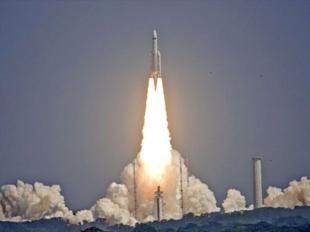
The Ariane-5 rocket was loaded with the Herschel space telescope and the Planck spacecraft, carrying a payload of 4.81 tonnes when it launched from the city of Kourou on Thursday.
The Herschel will study the formation of stars and galaxies, while the Planck will gather data on remaining radiation from the Big Bang, the massive cosmological explosion that many scientists believe formed the stars and planets.
Dozens of officials with the European Space Agency, which is sponsoring the mission, clapped and hugged each other as the telescope and craft separated successfully about 25 minutes after takeoff.
"Today, we are seeking the origins of the universe," said Jean-Yves Le Gall, chairman and CEO of French satellite launcher Arianespace, which manufactured the rocket.
It will take several weeks for the telescope and craft to be in orbit nearly 1.5 million kilometres from earth. The craft will stay in orbit for 21 months, while the telescope will map the heavens for up to three years, mission manager Philippe Rolland said.
The telescope will study chunks of ice and dust left over from the formation of planets, among other things. The data collected could help answer questions such as what the universe was made of, how it has evolved and the rate at which it is expanding.
"Scientists will be able to explore the unknown," ESA director Jean-Jacques Dordain said.
Officials say the equipment will be among the coldest items in the universe, with helium keeping it at nearly absolute zero (-273 degrees Celsius). When the helium is used up, the instruments will overheat and become inoperable.
Construction of the telescope and spacecraft cost about $US952 million.
The launch was delayed twice because scientists discovered an anomaly and needed to fine tune procedures following software updates.
Associated Press



Reader Comments
to our Newsletter